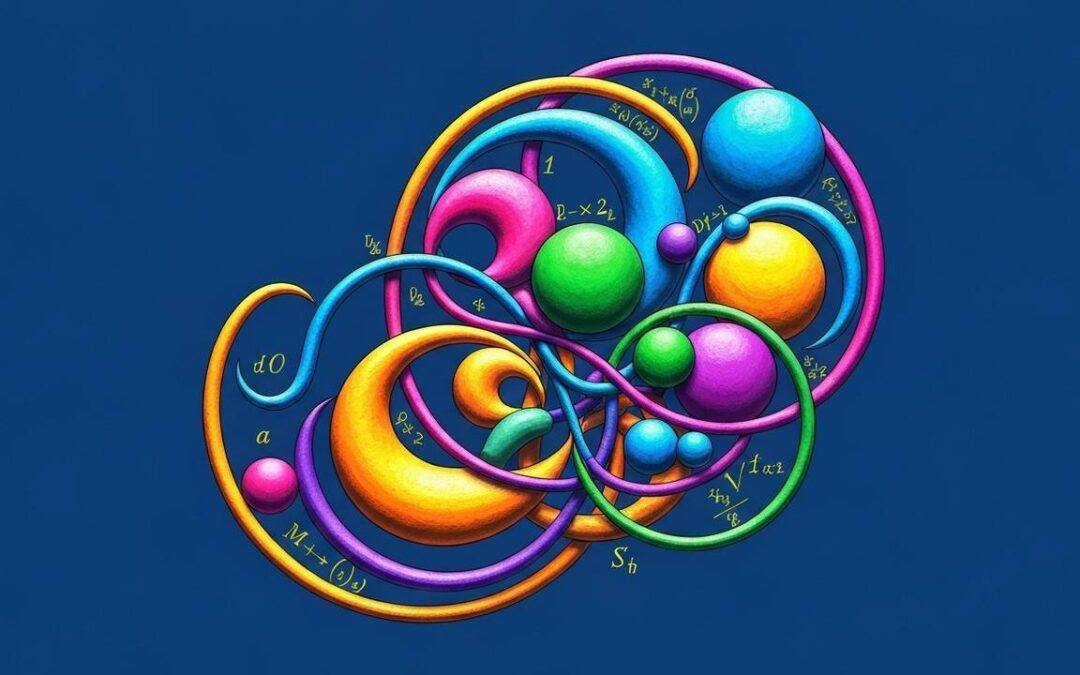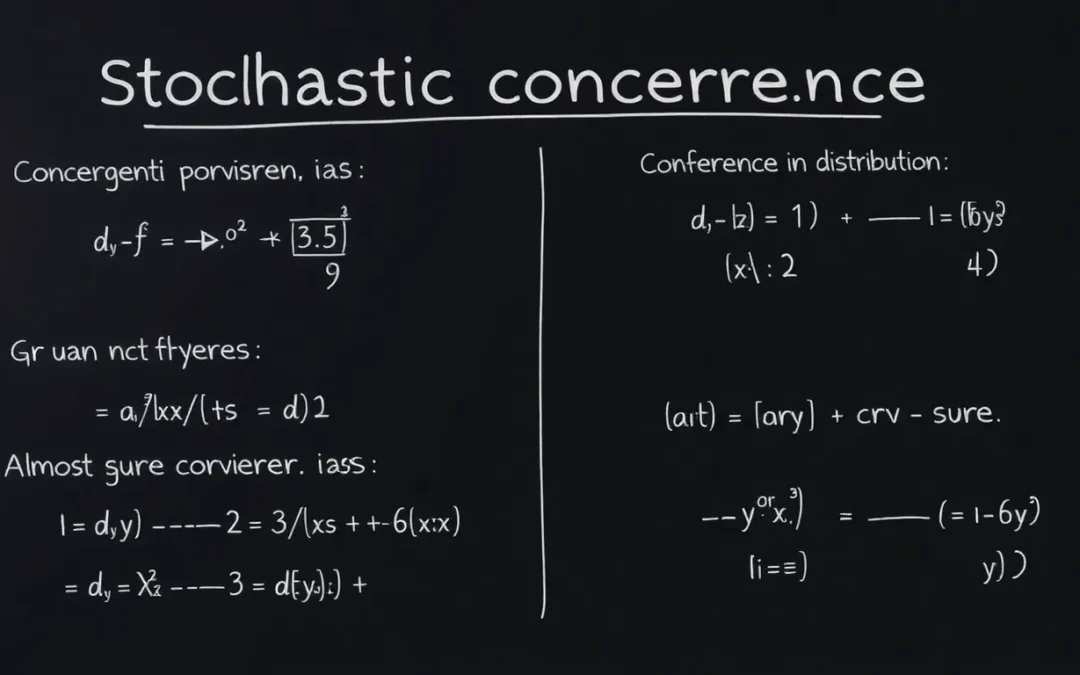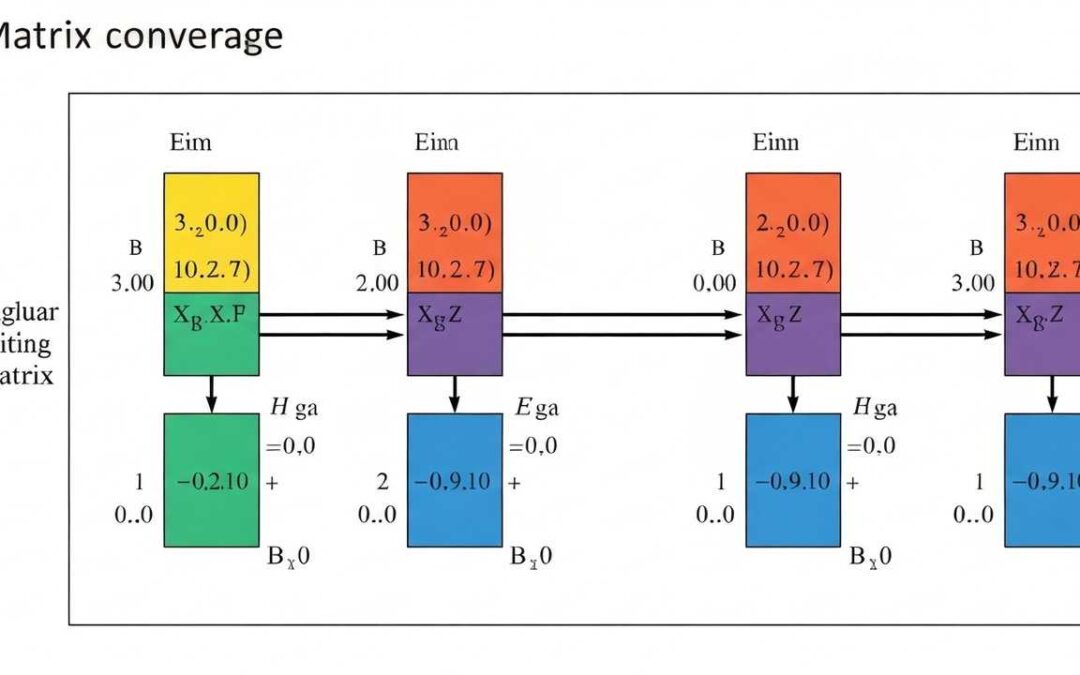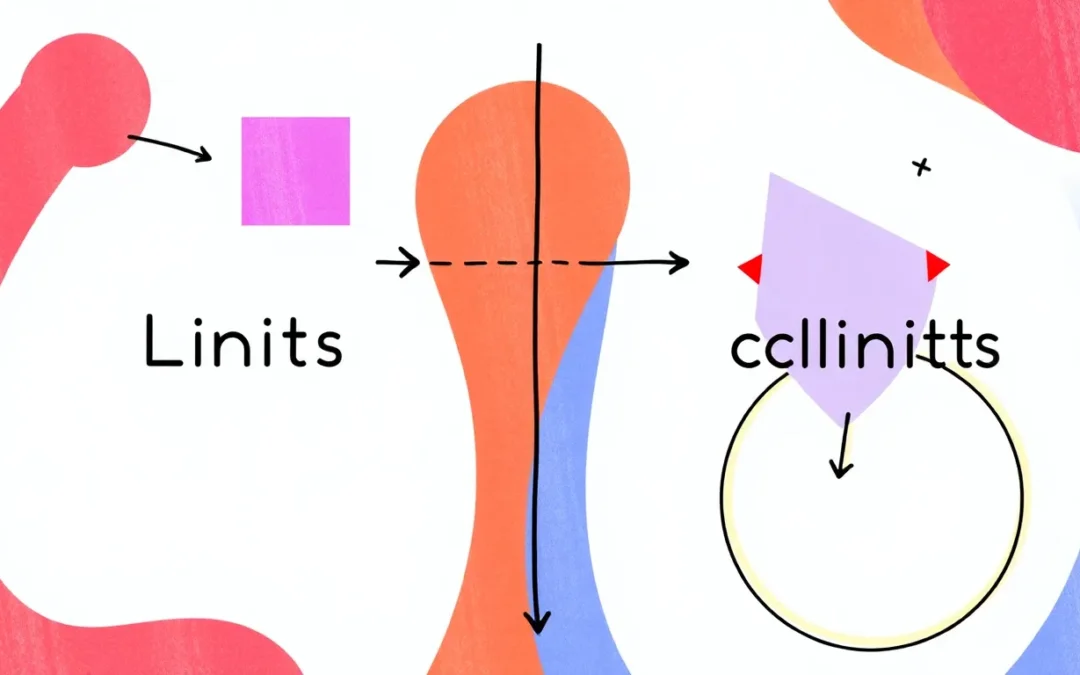Convergence is a fundamental concept in mathematics, and the various modes of convergence are critical for a comprehensive understanding of mathematical analysis. Different types of convergence provide a framework for understanding how sequences, series, and functions behave as they approach their limits. This article explores these modes, highlighting their definitions and importance.
This article will provide a detailed overview of convergence, from the basic definitions of sequence and series convergence to the more advanced concepts of function and measure-theoretic convergence. We will examine the nuances of each type, including pointwise, uniform, and absolute convergence, and their implications. Understanding these concepts is key to tackling advanced mathematical problems.
Table of Contents
Read More
In the vast landscape of mathematics, the concept of convergence is fundamental. The idea that a sequence or series approaches a specific value is central to calculus, analysis, and many other branches of the subject. However, convergence isn’t a one-size-fits-all concept. There are various modes or types of convergence, each with its own nuances and applications. This article delves into these different modes, exploring their definitions, properties, and implications. Let’s begin our exploration of the fascinating world of mathematical convergence!
Unveiling the Core Concept: Convergence in Sequences
What does it truly mean for a sequence to converge? It implies that the terms of the sequence get arbitrarily close to a specific value as we move further along the sequence. This “specific value” is known as the limit of the sequence. The notion of convergence is the cornerstone of calculus and analysis.
In the realm of mathematics, various types of spaces come into play, each providing a unique setting for defining convergence. These spaces include sets, topological spaces, uniform spaces, and normed spaces. Each one builds upon the previous, allowing for increasingly sophisticated definitions of convergence. The study of convergence becomes more complex as we progress from simpler to more complex mathematical structures.
Sequences and Their Limits
A sequence is a function whose domain is the set of natural numbers. The range of this function consists of the terms of the sequence. For a sequence to converge, there should exist a limit, which can be seen as the value that the sequence approaches as the index increases. If a sequence does not converge, we say that it diverges.
The epsilon-delta definition formally captures the idea of convergence. A sequence (an) converges to a limit L if, for every positive number epsilon, there exists a natural number N such that the absolute difference between an and L is less than epsilon for all n > N. This definition ensures that the terms of the sequence eventually get arbitrarily close to L.
Delving into Series: Convergence of Partial Sums
Convergence extends from sequences to series, which are the sums of the terms of a sequence. The convergence of a series is defined in terms of the convergence of the sequence of its partial sums. Understanding series convergence is crucial for studying infinite sums, power series, and Fourier series.
In a topological abelian group, the convergence of a series is defined as the convergence of the sequence of partial sums. An important concept when considering series is unconditional convergence. This concept guarantees that the limit of the series is invariant under permutations of the summands. This property is essential in many applications.
Absolute Convergence
In a normed vector space, absolute convergence is defined as the convergence of the series of absolute values of the terms. This is a stronger condition than simple convergence. Absolute convergence implies Cauchy convergence, which in turn implies the convergence of the series.
The convergence of each absolutely convergent series is an equivalent condition for a normed vector space to be Banach (i.e., complete). This concept is crucial in functional analysis. Absolute convergence and convergence together imply unconditional convergence. Unconditional convergence does not imply absolute convergence in general, even if the space is Banach, although the implication holds in ##R^d##.
Convergence of Functions: A Broader Perspective
The concept of convergence can also be extended to sequences of functions. The most basic type of convergence for a sequence of functions is pointwise convergence. Pointwise convergence means that for each point in the domain, the sequence of function values converges to a specific value. Uniform convergence is a stronger form of convergence, ensuring that the functions converge uniformly across the entire domain.
If the domain of the functions is a topological space and the codomain is a uniform space, local uniform convergence (i.e., uniform convergence on a neighborhood of each point) and compact (uniform) convergence (i.e., uniform convergence on all compact subsets) may be defined. Uniform convergence implies both local uniform convergence and compact convergence, since both are local notions while uniform convergence is global. If X is locally compact, then local uniform convergence is equivalent to compact (uniform) convergence.
Pointwise vs. Uniform Convergence
Pointwise convergence means that for each x in the domain, the sequence of functions converges to a value. However, the rate of convergence can vary from point to point. Uniform convergence requires the sequence of functions to converge at the same rate across the entire domain. This stronger condition ensures more consistent behavior.
Uniform convergence implies pointwise convergence, but the converse is not always true. Uniform convergence is a more powerful concept, as it preserves many properties, such as continuity, differentiability, and integrability, that pointwise convergence does not necessarily preserve. The distinction between pointwise and uniform convergence is critical in many areas of analysis.
Convergence in Measure Theory
In measure theory, convergence takes on a different flavor. If one considers sequences of measurable functions, then several modes of convergence that depend on measure-theoretic properties arise. This includes pointwise convergence almost-everywhere, convergence in p-mean and convergence in measure. These are of particular interest in probability theory and functional analysis.
For functions defined on a topological space, one can define local uniform convergence and compact (uniform) convergence in terms of the partial sums of the series. If, in addition, the functions take values in a normed linear space, then local normal convergence (local, uniform, absolute convergence) and compact normal convergence (absolute convergence on compact sets) can be defined. Normal convergence implies both local normal convergence and compact normal convergence. And if the domain is locally compact, then local normal convergence implies compact normal convergence.
Convergence Almost Everywhere
Pointwise convergence almost everywhere means that the sequence of functions converges pointwise, except possibly on a set of measure zero. This type of convergence is weaker than pointwise convergence. It is still a useful concept in measure theory and probability theory. It is often used in the context of Lebesgue integration.
Convergence in p-mean is another type of convergence. It focuses on the convergence of the ##L^p## norms of the differences between the functions and their limit. This type of convergence is used in the study of function spaces. Convergence in measure is a type of convergence that depends on the measure of the set where the functions differ significantly.
Key Takeaways: Mastering Different Modes of Convergence
Understanding the different modes of convergence is essential for any serious student of mathematics. Each mode provides a different way of looking at how sequences and series approach their limits. From the basic concepts of sequences and series to the more advanced ideas of function spaces and measure theory, convergence is a unifying theme. By mastering these concepts, you will unlock a deeper understanding of mathematical analysis.
Different types of convergence play a crucial role in various mathematical contexts. They provide powerful tools for analyzing the behavior of sequences, series, and functions. Whether you are studying calculus, real analysis, or probability theory, a firm grasp of these concepts will serve you well. Keep exploring and applying these ideas to expand your mathematical horizons!
Similar Problems
1. Determine if the sequence ##a_n = 1/n## converges, and if so, find its limit. Solution: The sequence converges to 0.
2. Examine the convergence of the series ## sum_{n=1}^{\infty} 1/n^2##. Solution: The series converges.
3. Given the function sequence ##f_n(x) = x^n## on ##[0, 1]##, investigate its pointwise convergence. Solution: The function converges pointwise to a function that is 0 for x in ##[0, 1)## and 1 at x = 1.
4. Discuss the implications of uniform convergence for a sequence of continuous functions. Solution: Uniform convergence preserves continuity.
5. Describe the difference between pointwise and uniform convergence. Solution: Uniform convergence requires a uniform rate of convergence across the domain, while pointwise convergence does not.
| Type of Convergence | Description | Key Properties |
|---|---|---|
| Sequence Convergence | A sequence converges if its terms approach a limit. | Defined by the epsilon-delta definition. |
| Series Convergence | Convergence of a series is defined by the convergence of its partial sums. | Absolute convergence implies Cauchy convergence. |
| Pointwise Convergence | A sequence of functions converges pointwise if, for each point in the domain, the sequence of function values converges. | Does not necessarily preserve continuity or differentiability. |
| Uniform Convergence | A sequence of functions converges uniformly if it converges at the same rate across the entire domain. | Preserves continuity, differentiability, and integrability. |
| Absolute Convergence | Convergence of the series of absolute values of the terms. | Implies Cauchy convergence in normed vector spaces. |
| Normal Convergence | Convergence of the series of non-negative real numbers obtained by taking the uniform norm of each function in the series. | Implies uniform convergence in Banach spaces. |
We also Published
RESOURCES
- Different Types of Convergence for Sequences of Random Variables
- Modes of convergence – Wikipedia
- 3.8 Three Types of Convergence
- Convergence of random variables – Wikipedia
- Types of convergence in probability confusion? – Mathematics Stack …
- 1.4 Convergence | Media and Culture
- Blended Finance | Convergence
- Learn About Convergence Research – Research Approaches | NSF …
- Type-10 Hardpoint Convergence Example : r/EliteDangerous
- New types of convergence for unbounded star-shaped sets








0 Comments